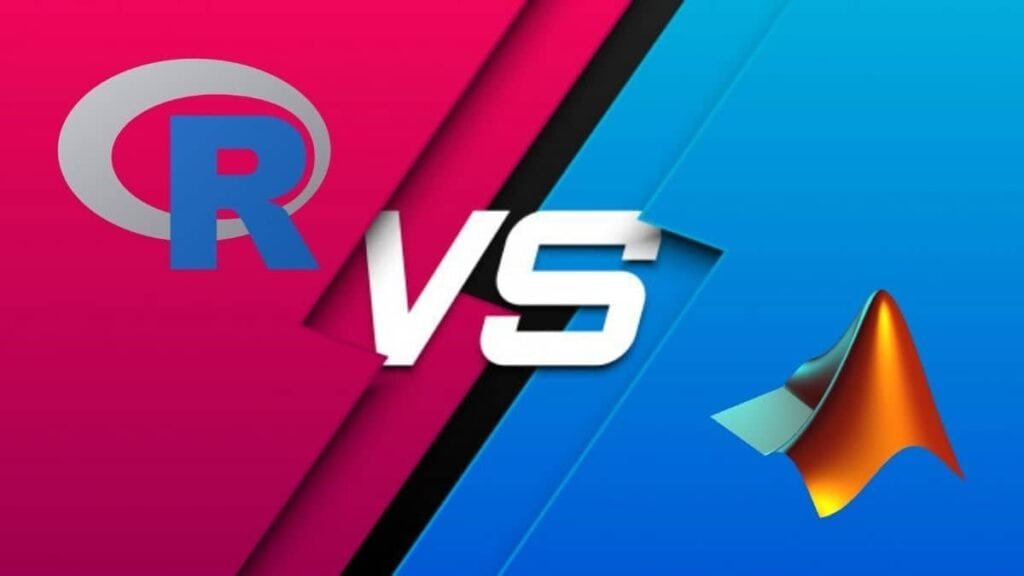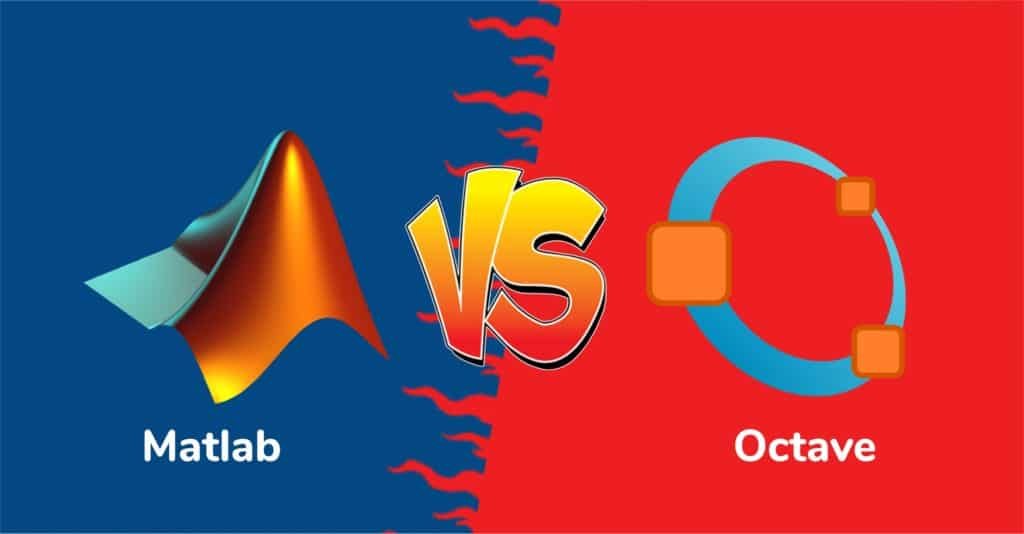Navigating the ever-evolving world of programming languages is crucial for staying ahead in the tech landscape. As we look ahead to 2025 and the decade, understanding the languages that will likely dominate the coding scene becomes essential. These languages work as the foundation for creating software, applications, and websites, forming the backbone of the digital realm. So today we will explore the top programming languages 2025.
Whether you’re a seasoned coder or just starting your programming journey, knowing the trends can guide your learning path. Each language has its strengths, and the demand for particular skills can shape career opportunities. From the versatile Python to the dynamic JavaScript, the choices are vast, and making informed decisions about what to learn can significantly impact your future in the tech industry. In this exploration of the top programming languages for 2025, we’ll dive into the depth of key languages that are expected to shape the coding landscape in the coming years.
| Say goodbye to academic stress and hello to well-crafted assignments that stand out. Here are we for your Assignment Help. |
What Are Programming Languages?
Table of Contents
Programming languages are those sets of rules that computers understand to perform tasks. Popular languages like Python and JavaScript enable developers to create diverse applications, websites, and software. Each language has unique strengths, influencing its application in various domains.
As technology evolves, new languages emerge, shaping the coding landscape. Choosing the right language depends on the project’s requirements and the programmer’s goals. Familiarity with multiple languages enhances a coder’s versatility, opening doors to diverse opportunities in the ever-expanding tech industry.
Increasing demand Of Programmers And Expected Increase
- The demand for programmers is increasing rapidly, and it is expected to continue to grow in the future.
- According to some reputed research organizations the shortage of full-time software developers across the globe is expected to increase from 1.4 million in 2021 up to 4.0 million in 2025.
- The Researchers also project that the software engineering field will grow by a massive 25% between 2021 and 2025. However, the supply of skilled developers is not keeping up with the demand, and this talent shortage is expected to continue.
- The shortage of software talent is a very real and pressing issue, and it could result in nearly $8.5 trillion in unrealized annual revenues.
- As a result, companies are struggling to fill open positions, and HR professionals are finding it challenging to recruit qualified developer talent.
- The top programming languages in demand in 2025, according to the Stack Overflow Developer Survey, include JavaScript, SQL, Python, Java, and C#

Sectors Using Programming Languages
In the contemporary digital era, programming languages play a key role in shaping and advancing various sectors. From powering websites to automating complex processes, these languages are the backbone of technological innovation. Let’s explore the top five sectors where programming languages are extensively employed.
1. Software Development: Programming languages like Python, Java, and C++ are instrumental in creating strong and efficient software applications for diverse purposes.
2. Web Development: HTML, CSS, JavaScript, and other languages are the driving force behind the dynamic and interactive websites we use daily.
3. Data Science and Analytics: Python, R, and SQL are key players in the data science realm, facilitating data analysis, machine learning, and insightful decision-making.
4. Finance and Fintech: Languages like Java and Python are prevalent in developing financial algorithms, managing transactions, and ensuring the security of financial systems.
5. Healthcare Technology: Programming languages contribute to the development of medical software, electronic health records, and data analysis tools, increasing efficiency and patient care in the health sector.
Top Programming Languages 2025 To 2035
Here are the top programming languages 2025 and top 15 are as:
1) JavaScript
JavaScript is a high-level, interpreted programming language mainly used for creating different dynamic and interactive web pages. It is a key technology for front-end web development, enabling the creation of responsive and engaging user interfaces. JavaScript works on all major web browsers, making it a fundamental component of web development.
Key Strengths
- Integration with HTML and CSS: JavaScript seamlessly operates with HTML and CSS, the core technologies of web development. This allows developers to manipulate the structure and style of a webpage dynamically, enhancing user experience.
- Extensibility and Modularity: JavaScript supports modular programming through functions and objects, making it easy to organize code into reusable components. This facilitates maintainability and scalability, especially when building large and complex applications.
- Libraries and Frameworks: JavaScript has a rich ecosystem of libraries and frameworks, for example jQuery, React, Angular, and Vue.js. These tools provide pre-built functionalities, simplify common tasks, and enhance the development process.
2) HTML/CSS
HTML (Hypertext Markup Language): HTML structures web content using tags and attributes. It defines elements like headings, paragraphs, links, and images, forming the basic structure of a web page.
CSS (Cascading Style Sheets): CSS is a style sheet language that controls the presentation of HTML documents. It allows developers to manage layout, formatting, and appearance, separating design from content.
Key Strengths
- Separation of Concerns: HTML handles content, while CSS manages presentation, promoting a clean and organized development approach.
- Consistency and Reusability: CSS enables consistent styling across pages, reducing redundancy and making maintenance more efficient.
- Responsive Design: HTML and CSS together create responsive designs, ensuring a website looks good on various devices by adapting to different screen sizes.
3) Python
Python is a widely-used, user-friendly programming language known for its simplicity and readability. Created in 1991, Python’s clear syntax makes coding straightforward and understandable.
Key Strengths
- Readability and Simplicity: Python’s syntax is easy to read and resembles English, making it accessible for beginners and enhancing code clarity.
- Extensive Standard Library: Python includes a vast standard library with pre-built modules, reducing the need for developers to write code from scratch and accelerating development.
- Versatility and Community Support: Python is versatile, suitable for various applications like web development, data analysis, AI, and more. Its active community provides a rich ecosystem of libraries and frameworks, fostering collaboration and problem-solving.
4) SQL
SQL is a specialized programming language used for managing and manipulating relational databases. It allows users to interact with its databases by performing tasks like querying data, updating records, and managing database structures.
Key Strengths
- Data Retrieval: SQL excels at retrieving specific data from databases using queries. It allows users to fetch, filter, and sort information efficiently.
- Data Modification: SQL provides powerful commands for modifying data in databases, including inserting, updating, and deleting records. This ensures accurate and controlled data management.
- Database Management: SQL is effective in managing the structure of databases. It allows users for the creation, modification, and deletion of database tables, ensuring the organization and integrity of data.
5) TypeScript
TypeScript is a common programming language developed by Microsoft that adds static typing to JavaScript. It helps catch potential errors during development and enhances the maintainability of code.
Key Strengths
- Static Typing: TypeScript introduces static types, allowing developers to define the types of variables and catch errors early in the development process, making code more robust.
- Enhanced Tooling and IDE Support: TypeScript offers improved tooling and IDE support, providing features like autocompletion, code navigation, and better refactoring tools, which contribute to a more productive development experience.
- Compatibility with JavaScript: TypeScript is a superset of JavaScript, meaning existing JavaScript code can be gradually upgraded to TypeScript. This flexibility makes it easy for developers to adopt TypeScript in their projects without rewriting everything.
6) Bash/Shell
Bash, or the “Bourne Again SHell,” is a command-line interpreter or shell for Unix-like operating systems. It provides a text-based interface to work with the operating system and execute commands.
Key Strengths
- Automation: Bash excels at automating repetitive tasks. You can create scripts to perform a series of commands automatically, saving time and reducing the chance of human error.
- Customization: Bash allows users to customize their command-line environment extensively. You can create aliases, define functions, and configure settings to suit your preferences and workflow.
- Powerful Command-Line Tools: Bash integrates with a wide range of powerful command-line tools and utilities. It enables users to combine and chain these tools together to perform complex operations efficiently, making it a robust environment for system administrators and power users.
7) Java
Java is a versatile and one of the widely used programming languages majorly known for its platform independence, object-oriented nature, and strong community support.
Key strengths
- Platform Independence: Java programs can work on multiple device or operating system with JVM. This “write once, run anywhere” capability makes Java highly portable.
- Object-Oriented Programming (OOP): Java is based on the principles of object-oriented programming, promoting modular and organized code through the use of classes and objects. This enhances code reusability and maintainability.
- Strong Community and Ecosystem: Java has a vast and active community of developers. The extensive ecosystem includes libraries, frameworks (like Spring and Hibernate), and tools that contribute to the robustness and scalability of Java applications.
8) C#
C# (also called “C sharp”) is a versatile, object-oriented programming language developed by Microsoft. Its top strengths include platform independence with support for Windows, Linux, and macOS through .NET, seamless integration with the robust .NET Framework, and strong typing for early error detection and enhanced code reliability. C# is widely used for building diverse applications, from desktop and web software to mobile apps and games using Unity.
Key strengths
- Versatility and Platform Independence: C# can be utilized for a variety of applications and is now cross-platform, supporting development on Windows, Linux, and macOS.
- Integration with the .NET Framework: C# is closely integrated with the powerful .NET Framework, providing a set of libraries and tools for efficient and effective application development.
- Strong Typing and Safety: C# is statically typed, catching errors at compile-time, and supports strong typing, leading to more readable and reliable code with features like exception handling and memory management.
9) C++
C++ is one of the popular general purpose programming languages that was developed as a major extension of the “C” with the most of the object-oriented programming features. It is widely used for various applications, including system/software development, game development, and high-performance computing.
Key strengths
- Performance: C++ is known for its high performance, making it suitable for applications where speed and efficiency are crucial. It allows low-level manipulation of data and memory. The language provides features like pointers and manual memory management, giving developers fine-grained control over system resources.
- Versatility: C++ is a versatile language that supports multiple programming styles, including procedural, object-oriented, and generic programming. Making it suitable for numerous applications, from system-level programming to application development and even embedded systems. The language’s flexibility allows developers to choose the most appropriate programming paradigm based on the specific requirements of their projects.
- Standard Template Library (STL): C++ involves the Standard Template Library (STL), which is a powerful collection of template classes and functions. The STL provides generic algorithms, containers, and other components that simplify and enhance the efficiency of C++ programming. The use of templates allows for generic programming, enabling developers to write highly efficient and flexible code while maintaining type safety. The STL is a key component that contributes to the productivity and robustness of C++ programs.
10) C
C is a general-purpose, procedural programming language that was developed by Dennis Ritchie in 1972. It has since become one of the most widely used programming languages and has influenced the development of many other languages.
Key strengths
- Efficiency and Performance: C is known for its high performance and efficiency. It allows low-level manipulation of data and provides direct access to memory, enabling developers to write code that executes quickly and with minimal overhead. This makes C a popular choice for system-level programming, embedded systems, and other performance-critical applications.
- Portability: C programs can be easily used across different platforms with minimal changes. The language is designed to be machine-independent, and its compilers are available for a wide range of hardware architectures. This portability has played important role in the widespread use of C in developing operating systems and other software that needs to run on diverse computing environments.
- Extensibility and Flexibility: C is a powerful and flexible language that allows low-level manipulation of data and provides features like pointers, manual memory management, and bit-level operations. This flexibility allows developers to implement a wide range of algorithms and data structures and adapt their code to specific requirements. It also serves as a foundation for many other programming languages, providing a level of control that higher-level languages may lack.
11) PHP
PHP also known as Hypertext Preprocessor is a on the server scripting language mainly utilized for web development. It is especially crafted for creating dynamic web pages and applications.
Key strengths
- Versatility: PHP is highly versatile and can be embedded within HTML code or used in combination with various web development frameworks. It is compatible with a number of operating systems (Windows, Linux, Unix, macOS) and works seamlessly with popular web servers.
- Large Community and Resources: PHP has a vast and active community of developers. This community contributes to a wealth of online resources, including documentation, forums, and tutorials. The abundance of open-source projects and libraries makes it easier for developers to find solutions and implement features efficiently.
- Rapid Development: PHP is known for its simplicity and convenience, allowing developers to create dynamic web applications quickly. PHP also supports a vast range of databases, further facilitating rapid development by providing flexibility in terms of data storage and retrieval.
12) PowerShell
PowerShell is a powerful command-line shell and language developed by Microsoft for managing and automating tasks on Windows operating systems. It is especially useful for system administrators, IT professionals, and developers to streamline and automate various tasks.
Key Strengths
- Automation: PowerShell allows users to automate repetitive tasks and workflows, decreasing the need for manual intervention. This can save time and making sure consistency in the execution of tasks.
- Flexibility: PowerShell is a versatile tool that can operate with a vast range of technologies and services, both from Microsoft and third-party vendors. This flexibility makes it a valuable tool for managing diverse IT environments.
- Integration: PowerShell seamlessly integrates with other Microsoft products and services, making it a favorable choice for managing Windows-based systems. It can also be used to interact with and control various aspects of the Windows operating system, applications, and services.
13) Go
Go, also known as Golang, is a modern era programming language developed by Google. It was designed to be systematic, well organized and convenient for building reliable and scalable software.
Key Strengths
- Concurrent and Parallel Processing: Go excels at handling multiple tasks simultaneously. It has built-in support for concurrent programming, making it easier to write programs that efficiently execute tasks concurrently, improving performance.
- Simplicity and Readability: Go is designed with a straightforward syntax and a minimalistic approach. This simplicity makes the language easy to learn and read. Code written in Go is typically clean and concise, which helps developers understand and maintain it more easily.
- Efficient Compilation and Execution: Go programs are compiled into machine code, which makes them run faster than interpreted languages. Additionally, Go’s compilation process is quick, enabling developers to iterate rapidly during the development process. The language is designed for efficiency in terms of both development and execution.
14) Rust
Rust is a programming language that emphasizes on providing a reliable and efficient way to write software, especially system-level software where performance and safety are crucial.
Key Strengths
- Memory Safety: Rust is designed to avoid and detect common programming errors related to memory, such as null pointer dereferences and buffer overflows. This helps developers write more robust and secure code, decreasing the risk of crashes and vulnerabilities.
- Concurrency Without Data Races: Rust allows developers to write concurrent programs without the risk of data races, which occur when multiple threads access shared data simultaneously, leading to unpredictable behavior. Rust’s ownership system ensures that only one part of the code can modify data at a time, preventing data race issues.
- Performance: Rust is designed for high performance, making it suitable for tasks where speed is critical. It achieves this by providing fine-grained control over system resources and avoiding the overhead of garbage collection, which is common in some other programming languages. This makes Rust well-suited for systems programming, game development, and other performance-sensitive applications.
15) Kotlin
Kotlin is a modern era programming language that works on the Java Virtual Machine and can be used for various types of development, including Android app development.
Key Strengths
- Conciseness and Readability: Kotlin is designed to be concise and expressive, meaning you can write less codes to achieve the same objective compared to some other programming languages. This makes the code easier to read and maintain.
- Interoperability with Java: Kotlin is fully interoperable with Java, which means you can use current Java libraries and frameworks seamlessly. This makes it easy for developers to adopt Kotlin gradually in their projects without having to rewrite everything from scratch.
- Null Safety: Kotlin has built-in null safety features, which help prevent null pointer exceptions, a common source of bugs in many programming languages. This feature makes code more robust and reduces the likelihood of crashes caused by null references.
Increasing demand Of Programmers And Expected Increase
- The demand for programmers is increasing rapidly, and it is expected to continue to grow in the future.
- According to some reputed research organizations the shortage of full-time software developers across the globe is expected to increase from 1.4 million in 2021 up to 4.0 million in 2025.
- The Researchers also project that the software engineering field will grow by a massive 25% between 2021 and 2025. However, the supply of skilled developers is not keeping up with the demand, and this talent shortage is expected to continue.
- The shortage of software talent is a very real and pressing issue, and it could result in nearly $8.5 trillion in unrealized annual revenues.
- As a result, companies are struggling to fill open positions, and HR professionals are finding it challenging to recruit qualified developer talent.
- The top programming languages in demand in 2025, according to the Stack Overflow Developer Survey, include JavaScript, SQL, Python, Java, and C#
Conclusion
In conclusion, the landscape of top programming languages 2025 offers a diverse range of options. Beginners should focus on learning languages like Python, JavaScript, and Java, which continue to be widely used. Understanding the basics structures of programming concepts, like variables, loops, and functions, remains crucial.
Also, staying updated on industry trends is important for making informed language choices. While newer languages may emerge, building a strong foundation in the basics will always be valuable. The key lies in consistent practice and a pragmatic approach to adapting to the evolving programming landscape.


